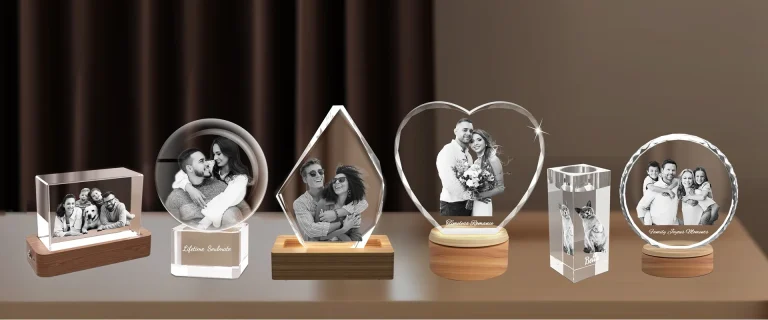
Introduction to the Essence of an Architectural Model
An architectural model is more than just a miniature representation of a building—it’s a synthesis of imagination, creativity, and technical precision. It embodies a concept, a vision translated into tangible form. In the world of design and development, these models serve as essential communication tools between architects, clients, and stakeholders. A well-crafted architectural model helps convey the emotional and structural essence of a project in a way that digital renderings and blueprints cannot. It stands as a physical narrative of a project’s past, present, and future.
Why Art Matters in Architectural Model Making
The artistry in crafting an architectural model lies in its ability to visually captivate while telling a deeper story. Each curve, texture, and material choice reflects a stylistic decision that aligns with the architect’s original vision. From sleek modern skyscrapers to organic, nature-inspired pavilions, artistic elements breathe life into these models. Attention to aesthetics is not just about beauty—it’s about evoking emotion and generating excitement. Whether viewed by a potential investor, a planning committee, or a museum audience, an architectural model should spark curiosity and inspire confidence in the project.
The Importance of Accuracy in Every Architectural Model
While artistic appeal draws attention, accuracy anchors credibility. Each architectural model must represent exact measurements, material proportions, and spatial relationships. This precision ensures that viewers understand scale, circulation, and real-world applicability. Without accuracy, even the most beautiful model loses its purpose. Designers rely on architectural models to evaluate how a structure interacts with its environment, where shadows fall, or how foot traffic flows. These elements, when accurately portrayed, aid in refining the final design. Precision in an architectural model is not optional—it is foundational.
Our Unique Approach to Model Making
At the heart of our model-making philosophy is the seamless fusion of art and accuracy. We understand that each architectural model must balance creative expression with technical discipline. Our team includes skilled craftsmen, architects, and digital designers who collaborate at every stage of the model-making process. From selecting the right materials to integrating interactive features, we tailor every architectural model to the unique needs of the client and project. This collaborative workflow ensures that every model is not only visually compelling but also architecturally faithful.
Materials and Techniques That Define Our Craft
The choice of materials plays a crucial role in defining the visual and structural fidelity of an architectural model. We work with a wide range of media—from traditional wood, foam board, and acrylic, to high-tech options like 3D-printed resin and laser-cut composites. Each project dictates its own material palette, depending on scale, complexity, and purpose. Our techniques blend handcrafting traditions with advanced digital fabrication. This approach allows us to achieve fine detail and structural precision that modern architecture demands, without losing the soul of artistic craftsmanship.
The Role of Digital Technology in Model Making
Modern tools such as CAD software, 3D printers, and laser cutters have expanded the potential of what an architectural model can be. While hand-built models remain a vital part of the process, digital tools provide us with the ability to execute complex geometries and ensure accuracy down to the millimeter. With technology, we can also produce multiple iterations of a model for testing or showcase purposes. Additionally, digital mapping enables us to simulate environmental effects such as light and shadow. This integration of technology makes our models dynamic tools in the design process.
Bringing Concepts to Life Through Scale Models
One of the most rewarding aspects of creating an architectural model is witnessing a concept evolve into a three-dimensional form. For clients and stakeholders, this transformation brings clarity. A scaled model makes it easier to see proportions, understand orientation, and visualize the final structure’s relationship to its surroundings. Whether it’s a residential development, a commercial complex, or a public park, an architectural model acts as a miniature reality. It turns abstract lines and elevations into something you can walk around, view from above, or interact with in meaningful ways.
Customization and Storytelling Through Models
Each architectural model we create is a unique narrative tool. It doesn’t merely display a structure—it tells the story of its design, purpose, and context. To do this effectively, we offer customizations such as removable components, interior lighting, and landscape detailing. These additions don’t just enhance the model’s appeal—they contribute to a deeper understanding of the project. For museums or real estate presentations, we may include people, vehicles, or water features to animate the environment. Every element is selected and placed with intent to communicate the project’s character and values.
Applications of Architectural Models Across Industries
Architectural models are not limited to architecture firms alone. They are used across multiple industries, including urban planning, interior design, civil engineering, and education. A city planner may use an architectural model to explain zoning changes to the public. A museum might use it to show the evolution of a landmark over time. Real estate developers use them to showcase future communities. In every case, the model becomes a bridge—connecting experts and laypeople, vision and implementation. This universality proves the enduring value of physical models in a digital age.
Client Collaboration and Feedback Integration
Our process involves consistent dialogue with clients. From initial concept discussions to final delivery, we make sure that the architectural model evolves in alignment with the client’s expectations. Revisions, additions, and refinements are part of this journey. By involving clients throughout the process, we ensure they feel ownership and satisfaction with the final result. This collaborative spirit enhances the functionality of the architectural model, making it a more effective communication tool and helping eliminate errors before they become costly in the real world.
Architectural Models as Marketing and Investment Tools
An architectural model is not just a technical aid—it’s also a marketing powerhouse. In real estate, models help attract investors and buyers by showcasing the full potential of a space before a single brick is laid. Investors are more likely to fund a project when they can physically see and touch a representation of it. These models can be centerpieces at expos, sales offices, and exhibitions, helping to build trust and excitement. As visual storytelling devices, they make ideas compelling and tangible, turning concepts into investment opportunities.
Sustainability and Responsibility in Model Making
Sustainability is an important principle in our work. When building an architectural model, we consciously select materials that are eco-friendly and recyclable whenever possible. We minimize waste through precise cutting and efficient use of resources. Moreover, we promote the reuse of models by building modular designs that can be updated or reconfigured as needed. Our commitment to sustainable practices reflects a broader responsibility to both the planet and our clients. We believe that even in model making, choices matter and contribute to the greater design ethos.
Preserving the Art of Architectural Model Making
As digital design becomes more dominant, some may question the relevance of physical models. Yet, the tactile experience of an architectural model offers something irreplaceable. It invites exploration and human connection in ways that screens and simulations cannot. For students, it’s a hands-on learning tool. For professionals, it’s a quality-check mechanism. For clients, it’s a reassurance of progress. We believe that preserving the craft of architectural model making means honoring both tradition and innovation—merging past skills with future tools to keep the art form alive and evolving.
Conclusion: Art and Accuracy Working in Harmony
Every architectural model we create is a manifestation of our dual commitment to art and accuracy. By harmonizing aesthetic expression with technical precision, we craft models that not only represent structures but elevate their stories. Whether used for design development, presentation, marketing, or education, our models bring abstract ideas into physical reality. They transform concepts into conversation, vision into touchable form, and potential into something undeniable. Through the meticulous blending of beauty and exactness, we ensure every architectural model we build truly embodies the best of what design can offer.



